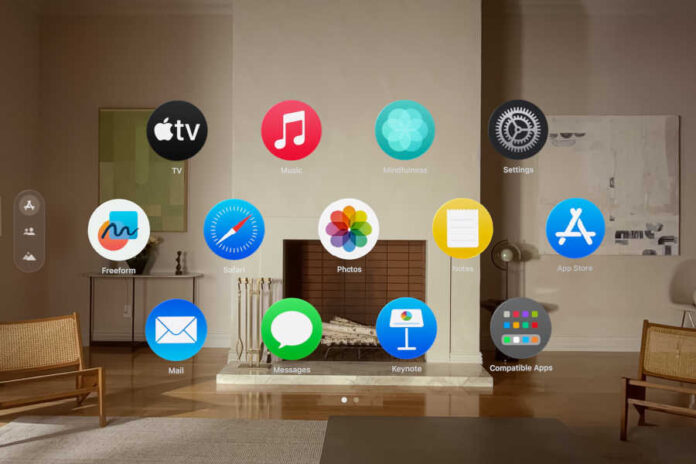
Apple will accept pre-orders for its VR headset Vision Pro in the next few weeks, and begin shipping the product on February 2. The announcement came after weeks of speculation about the company’s plans.
Vision Pro is a wearable virtual/augmented-reality headset that allows users to access apps from the “space” in front of their eyes. Whenever it happens, expect its launch to kick off a solid year of buzz about what Apple calls “spatial computing.” In that environment, Apple says, users will control apps with their eyes and hands, tapping fingers instead of clicking mice and entering data through dictation or a virtual keyboard.
To create spatial applications, developers can use tools and frameworks such as Xcode, SwiftUI, RealityKit and ARKit, along with a new 3D-content app called Reality Composer Pro. Users will be able to work within their real-world surroundings, in immersive digital environments or while switching between the two.
Vision Pro’s Road Ahead
After trying out Vision Pro, 9to5Mac lauded its capabilities to share immersive content using stellar video and sound. MacWorld took a more measured tone, saying Vision Pro’s success, or lack thereof, will take some time to become evident. Among the reasons: Vision Pro is an expensive, version 1.0 device which will be released in limited numbers. How developers respond to its capabilities – specifically how many apps they produce and how ambitious they are – will provide a sense of where the product’s heading.
Though Apple’s marketing is heavy on possible consumer uses, price alone indicates Vision Pro is a business product at heart. Its unit price of $3,499 makes any cost-benefit analysis inevitably tough. Mac O’Clock ’s Michael Swengel points out that Vision Pro is a sensor-packed computer in and of itself, not simply a linked device. Still, Meta’s “mixed-reality” Meta Quest Pro headset retails for around $1,000. CNET doesn’t think that’s a fair comparison. It puts Vision Pro in the same category as higher-end Macs. Meanwhile, many observers believe follow-on versions are bound to cost less as features are tweaked and production costs come down.
(Microsoft’s holographic HoloLens 2 device starts at $3,500 and ranges up to the area of $5,200. However its history has been choppy and its future appears uncertain.)
Champions of computing in the flow of work are sure to embrace Vision Pro’s promise. Already, products like Strivr, for example, have demonstrated the value VR tools can bring to learning. Apple’s approach takes such efforts several steps further. That said, a number of unknowns remain, including the cost of producing and deploying spatial content, the dynamics of the development community and solutions providers’ interest in building out the universe Apple envisions.
Vision Pro is sure to kick up discussions about VR applications in HCM technology during 2024, but whether that talk will match the volume level of generative AI’s buzz remains to be seen.
Updated Jan. 9, 2024 with announcement of Apple’s launch plans.
Image: Apple













